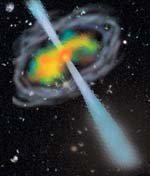bobdrake12 wrote:
Allow me to place emphasis on your quote:
"I'm not just thinking of the return of warlike, yet advanced beings from Nibiru, but of the impact on immortality advancements and our own psychological tendencies, if we are a transgenic species designed to be slaves in gold mines."
Perhaps, the word "we" can be changed to the vast majority of the general public on this planet.
Yes, I dare say that would probably be more accurate, Bob.
If we are going with the premise that humans were bio engineered laborers designed to take orders [alien] , the earths population could be "cast" as basically either:
1) mundane earthlings upgraded transgenically and via limited sexual crossing with Annunaki
2) the same, plus more Annunaki blood, breeding royal bloodlines and using the alchemical gold [>]
http://www.nexusmaga.../starfire1.html ).
Under this model of ET dominion, there would be developmental advantages for those with more of the Annunaki genetics. Yet, succumbing to bicammeral tendencies-- deference to external authority-- can better be addressed as a personal honesty issue-- a software, not hardware problem,
at least at this juction in time. Defaulting on the work of linking facts into proper context, in the face of the discomfort that this effort can produce, is the factor that speaks to your concern, what threatens our civilization with oblivion. Given back self-responsibility incentives, this stupidity tendency may be overcome by about any determined, persistant individual,
I have to hope (must--find-- STRENGTH!--).[roll]
bobdrake12
This irresponsible complacency by the general population is of far greater concern to me than the actual risks we have discussed to-date
Geniuses work towards a world free of death. I'm optimistic that the dynamics will allow that to happen, that people are learning to think, get out of the way, and let the geniuses make them like gods. Still, the non-integrating masses present an impedence to this prospect, They empower the malefactors-- they who have learned how to manipulate, or "guide" others through their bicammeral tendencies, extracting an easy, cushy ride though life. Clever malefactors dole out usurped time and effort of sacrificed others (quantities of lives) to those with needs (needs = rights, automatically). They make bad seem good, good seem bad. They stir up envy towards business, and the masses rally behind them. Business and science geniuses who would give us immortality and leisure space craft are burdened with intrusive regulations, time wasting paperwork, support of a parasitic elite bureaucracy-- because of an uncomprehending, stupid society ( check out
http://neo-tech.com ).
Here is some background on Jaynes' theory (he comes from the perspective the gods were schizophrenic type manifestations), one that Freer has mated with Sitchin's translated accounts from the Summerian record, one of day to day interactions and servitude to their flesh and blood Lords:
original text at
http://www.snowcrest...za/easyjayn.htm Summarizing, Jaynes' ConclusionsJaynes says
Consciousness is an operation rather than a thing, a repository, or a function.
It operates by way of Analogy, by way of constructing an Analog/-{SpatialModel} space with an Analog/{SpatialModel} " I " that can observe that space, and move Metaphorically in it.
It operates on any reactivity, excerpts relevant aspects, narratizes and conciliates them together in a Metaphorical space where such meanings can be manipulated like things in space.
Conscious mind is a spatial Analog/{SpatialModel} of the world and mental acts are Analog/{SpatialModel}s of bodily acts.
Consciousness operates only on objectively observable things. ...there is nothing in Consciousness that is not an Analog/{SpatialModel} of something that was in behavior first.
Conscious Awareness is a Metaphor/{SoundString}-generated model of the world.
------------------------------------------------------------------------
The Mind of Iliad
The first writing in human history in a language of which we have enough certainty of translation to consider it in connection with my hypothesis is the Iliad, regarded to have happened about 1230 BC, and written down about 850 BC.
No words for Conscious Awareness or mental acts. Words that later on come to mean mental acts have more concrete meanings in the Iliad.
No word for will. Iliadic men have no will of their own, and no notion of free will. Words for volition were invented later in Greek.
No words for the body as a whole, just different body parts.
There is no subjective Conscious Aware-ness, no mind, soul, or will, and no concept of the body as a whole.
Characters in the Iliad do not sit down and think out what to do; they have no ConsciouslyAware minds and no introspections.
It is a god who jumps in and tells men what to do, at every instance.
In fact, the gods take the place of Conscious Awareness.
The beginnings of action are not in Conscious plans, reasons, and motives; they are in the actions and speeches of gods.
The entire epic is the song of the goddess which the entranced bard 'heard' and chanted to his listeners.
Except for its later accretions, then, the epic itself was neither Consciously composed nor Consciously remembered, but was successively and creatively changed with no more awareness than a pianist has of his improvisations.
Who then were these gods that pushed men about like robots and sang epics through their lips?
They were voices whose speech and directions could be distinctly heard by the Iliadic heroes as voices are heard by certain epileptic and schizophrenic patients, or just as Joan of Arc heard her voices.
The gods were organizations of the central nervous system and can be regarded as personae in the sense of poignant consisten-cies through time, amalgams of parental or admonitory images.
The god is a part of the man.
He simply leads, advises, and orders.
The gods are what we now call hallucinations.






























































